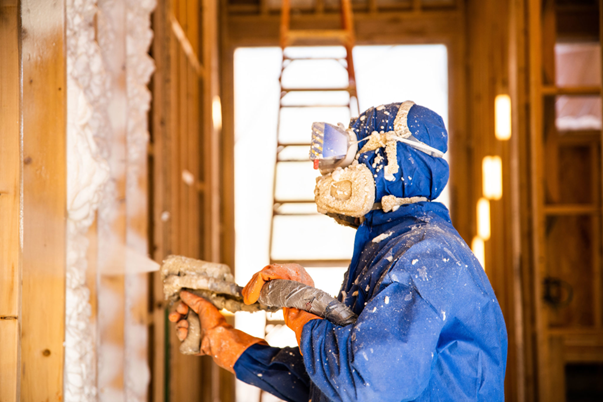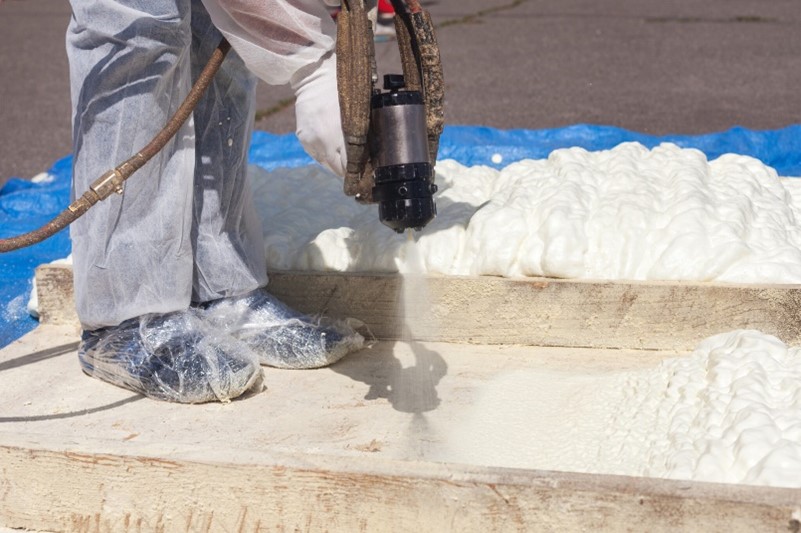
With the numerous advantageous properties of polyurethane foam, its applications are....
increasing day by day. When it comes to home insulation, this foam receives a lot of attention. It is a durable and airtight insulation material, which will protect buildings against heat loss for many years. However, can spray foam be applied to any surface? This article will discuss the topic.
Adhesion properties of polyurethane foam and how to measure it
In fact, polyurethane foam was discovered during research on a type of glue; therefore, it generally has good adhesion to various surfaces. Once applied to a surface, the foam adheres to it. However, there are factors that can alter the foam's adhesion properties and reduce it, such as temperature, surface preparation (presence of contamination, instability, etc.), and the degree of porosity of the substrate.
To determine the adhesion properties, the foam is applied to a part of the substrate's surface, and after the curing process is complete, it is pulled off the surface. The foam should break before detaching from the substrate surface.
According to the standard EN 14315-1, the adhesion strength of polyurethane or polyisocyanurate foam to the substrate surface is evaluated perpendicular to the applied forces. This process is carried out according to Annex F. The bond strength should not be less than 20 kPa and can be categorized into three levels based on its value:
It should be noted that the smaller the size of the sample under investigation, the greater the number of test repetitions until the results are reported. According to this standard, the tensile cohesion strength inside the foam structure is also determined.
In addition, in this test, the thickness of the sprayed foam should not be less than 30 millimeters. Also, the temperature should be within the range of 20 ± 2 degrees Celsius, the relative humidity should be 50 ± 5 percent, and the foam should be allowed to cure for a minimum of 24 hours.
On the other hand, one of the advantages of polyurethane spray foam is its ability to increase the strength of structures. After application, the foam expands and hardens in the air. To achieve this (enhancing structural integrity), the foam must have suitable adhesion to the substrate surface.
Improving polyurethane foam adhesion
To create a suitable bonding between foam and substrate, surfaces must be clean, dry, and free of dust and grease. This adhesion can also be increased according to the need, both physically, by scratching the surface, and chemically, by using a primer. If the substrate surface is metallic, there should be no signs of rust.
Generally, there are several methods to improve this property, including:
- Applying foam on a stable substrate because polyurethane has good adhesion to the primary bonding layer, but if this layer separates easily, the foam will also detach.
- For metal surfaces such as steel, aluminum, etc., the substrate surface must be free of grease, and before applying foam, it should be cleaned using a cleaning agent such as alcohol, and then a non-porous primer should be applied.
- For concrete surfaces, the surface must be thoroughly cleaned using a wire brush.
- For some polymer materials such as polyethylene film, the surface can be heated with a flame to improve adhesion with foam, but for materials like polypropylene or Teflon, good adhesion can never be achieved.
- When applied on wet surfaces or surfaces with dew, separation will occur with the application of polyurethane foam. The less porous the surface is, the more severe the problem will be. As a general rule, the moisture content of the substrate surface should be less than 20%. If the moisture content is higher than this, the foam will not adhere well.
- For unprotected asphalt surfaces, it is recommended to remove the polyethylene layer that causes non-adhesion using flame.
The effect of temperature on polyurethane foam adhesion
Temperature is one of the most crucial factors that affect the density and adhesion of foam. In order to achieve desirable results, the temperature should be above 16 degrees Celsius. Low temperatures affect the chemical reactions in two ways:
- They decrease the rate of chemical reactions.
- The heat of the thin chemical product layer is absorbed by the substrate upon contact.
It should be noted that in terms of heat loss, the temperature of the substrate will have a much greater impact than the ambient air temperature because the heat exchange process between liquid and air is much slower than that between liquid and solid. Consequently, when the substrate temperature is too low, as soon as the foam is applied, the reaction heat is absorbed, and there will be no time for the foaming agent to evaporate, hence preventing foam formation. In fact, although the foaming process does not take more than a few minutes, the lower the temperature, the longer the curing time.
On the other hand, in cold working conditions, the foam cools quickly, which leads to compression and liquefaction of the gas, resulting in foam shrinkage. This phenomenon prevents the foam from adhering completely to the substrate surface. The thicker the layer of foam applied, the more severe this problem becomes. Therefore, it can be concluded that the degree of adhesion also depends on the thickness of the applied foam. When applying the foam in cold weather, it is recommended to apply the foam in several thin layers to prevent shrinkage.
If the foam is to be sprayed at a temperature below 5 degrees Celsius, it is recommended to pay attention to the type of foaming agent present in the polyol component. The lower the boiling point of the foaming agent, the more suitable it will be for use in low-temperature applications. The use of dry hot air, IR light, or a Dry warm air, IR light or space heater (not diesel) can be used to heat up local areas of surface before foaming. can locally heat the substrate before foaming.

In this article, factors affecting the adhesion of sprayed foam were discussed, and some solutions were suggested to prevent or reduce this problem. To find out more, feel free to contact our experts.






